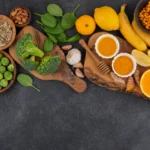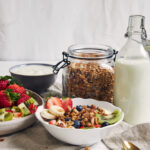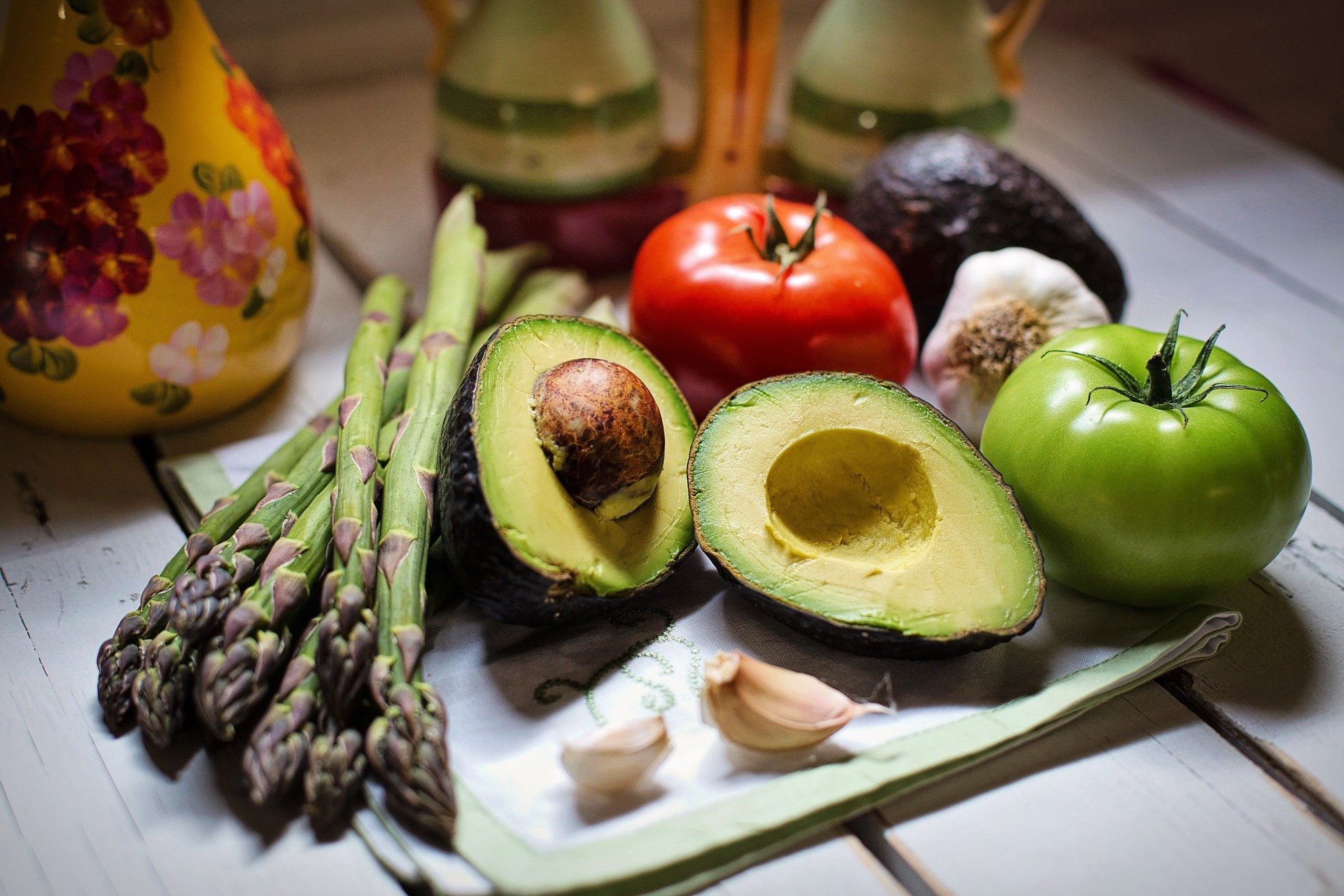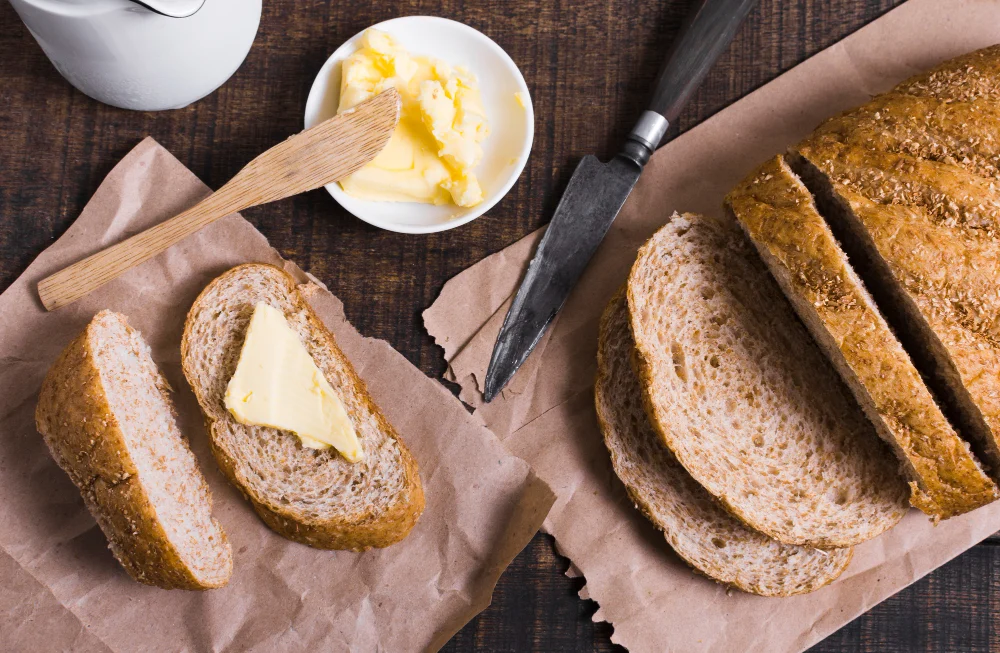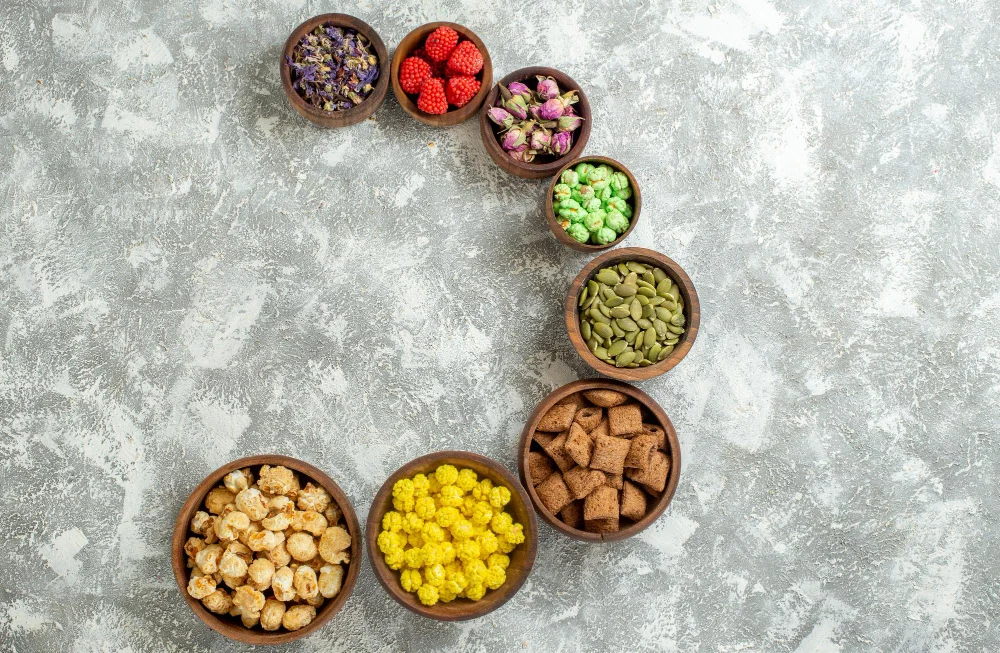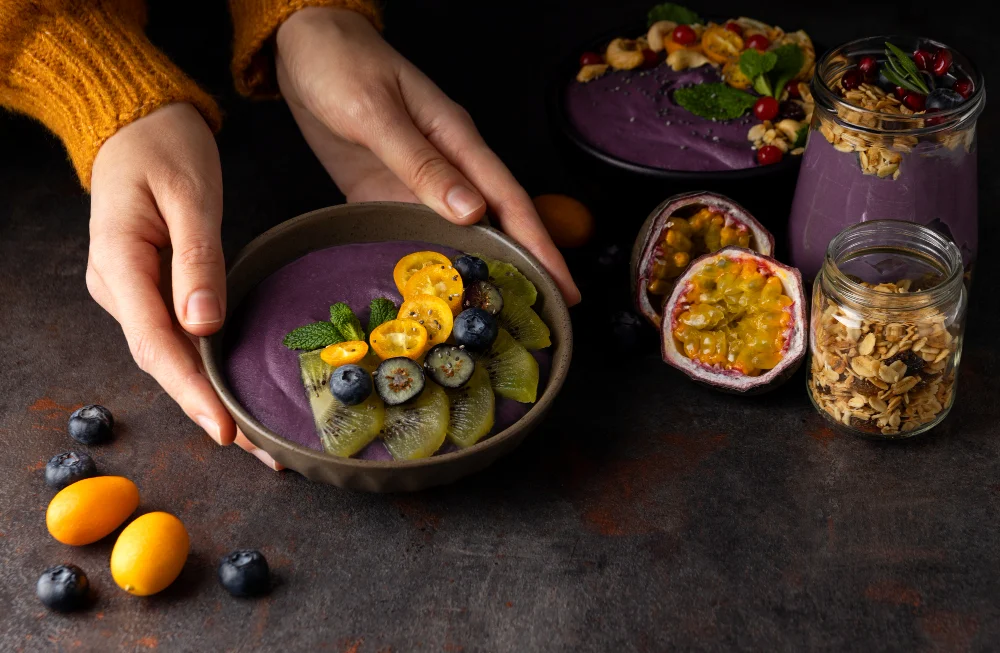Bringing home vibrant vegan groceries is just the first step; knowing how to store vegan food effectively is crucial for maximizing freshness, flavour, nutritional value, and minimizing waste. This analysis offers a 360° guide to Storing Vegan Foods, examining the practical techniques of the Home Cook, the underlying science from the Food Scientist, the economic and environmental impact highlighted by the Sustainability Advocate, the nutritional considerations from the Nutritionist, and the blend of traditional wisdom and modern methods noted by the Cultural Observer. As of today, May 5, 2025, applying these principles helps ensure your plant-based bounty stays delicious and nourishing for longer.
Vegan Food Preservation Principles: The Foundation of Freshness
Proper food storage isn’t just about tidiness; it’s about actively managing the factors that lead to spoilage and degradation. For vegan foods – particularly fresh produce, but also pantry staples and prepared meals – understanding basic tips of vegan food preservation principles is key. Temperature control, moisture management, oxygen limitation, and preventing cross-contamination form the foundation upon which we build effective storage habits, ensuring we get the most out of our food budget and reduce our environmental footprint.
LENS 1: The Home Cook’s Pantry & Fridge – Practical Storage Strategies

For the home cook, effective Storing Vegan Foods means knowing the right place and method for each item to extend its life and make meal prep easier.
- Produce Power:
- Leafy Greens (Spinach, Lettuce, Kale): Wash thoroughly, then dry completely (salad spinner or towels). Store loosely wrapped in a clean towel (paper or cloth) inside a sealed container or breathable bag (perforated plastic, cotton) in the crisper. Change towel if damp. Use within a week or so. (Microgreens: Store unwashed).
- Fresh Herbs (Cilantro, Parsley, Mint): Treat like flowers – trim stems, place in a jar with an inch of water, cover loosely, refrigerate. Alternatively, wash, dry, wrap loosely in a damp paper towel, and store in a sealed bag/container.
- Berries: Highly perishable. Best stored unwashed in a breathable container in the fridge. Wash just before eating. Alternatively, for longer storage: quickly wash in a 1:3 vinegar-water solution, rinse thoroughly, dry completely, and store in a breathable container with a paper towel.
- Ethylene Management: Store high-ethylene producers (bananas, apples, avocados, tomatoes, melons) away from ethylene-sensitive items (broccoli, leafy greens, carrots, cucumbers, peppers) to prevent premature ripening/spoilage.
- Countertop Crew: Keep tomatoes, potatoes (cool, dark, airy place), onions, garlic (cool, dark, airy), winter squash, and unripe bananas/avocados/mangoes (especially relevant during mango season here in Gujarat!) out of the fridge for best flavour and texture.
- Fridge Friends: Most other fruits and vegetables (peppers, broccoli, cauliflower, carrots, celery, ripe avocados/mangoes) belong in the crisper drawers.
- Pantry Provisions:
- Grains, Flours, Legumes, Pasta: Store in airtight containers (glass jars are ideal) in a cool, dark, dry place to prevent pests (especially important in warmer climates like Vadodara) and maintain freshness.
- Nuts & Seeds: Prone to rancidity due to oils. Store in airtight containers in the fridge or freezer for longer shelf life. Especially true for ground flaxseed/flax oil – freezer mandatory.
- Fridge Staples:
- Tofu & Tempeh: Once opened, store leftover tofu submerged in fresh cold water in an airtight container; change water daily and use within 3-4 days. Store opened tempeh tightly wrapped or in an airtight container; use within 2-3 days (follow package directions).
- Plant Milks: Refrigerate after opening. Store in the main body of the fridge (not the door, where temps fluctuate) and use by the date indicated.
- Leftovers: Cool completely, then store in airtight containers. Use within 3-4 days for safety and quality.
- Freezer Finds:
- Blanching: Briefly blanch vegetables before freezing to preserve colour, texture, and nutrients.
- Technique: Freeze berries or chopped items flat on a tray before transferring to bags/containers to prevent clumping. Remove as much air as possible.
- Labeling: Clearly label everything with contents and date.
- Organization: Practice FIFO (First-In, First-Out). Use clear containers. Designate an “Eat Me First” zone for items nearing their end.
- Daily Impact: Good storage habits mean less throwing away wilted greens or moldy berries, saving money and reducing the frustration of wasted food. An organized fridge/pantry makes meal planning and cooking much smoother.
- Voice of Experience (Efficient Home Cook): “Learning how to store produce properly, especially greens and herbs, was a game-changer! Less waste, better tasting food, and I always know what I have on hand thanks to clear containers and FIFO.”
- Perspective Question: Which single storage tip could you implement this week to reduce food waste in your kitchen?
LENS 2: The Food Scientist’s View – Why Storage Matters: Spoilage Science

- Microbial Growth (Bacteria, Mold, Yeast): These microorganisms thrive in warmth, moisture, and with available nutrients. Refrigeration (ideal range 1.6°C – 3.3°C / 35°F – 38°F) significantly slows their growth. Freezing halts it (but doesn’t kill all microbes). Reducing moisture (drying) or increasing acidity (pickling) also inhibits growth.
- Enzymatic Activity: Natural enzymes in fruits and vegetables continue to work after harvest, causing changes like browning (e.g., cut apples) and softening. Cold temperatures slow enzyme activity, as does acid (lemon juice). Blanching denatures many enzymes before freezing.
- Oxidation: Exposure to oxygen causes fats and oils (like in nuts, seeds, oils) to go rancid, affecting flavour and quality. It also degrades certain vitamins (like Vitamin C). Airtight containers and dark storage minimize oxygen exposure. Vacuum sealing is highly effective.
- Moisture Loss/Gain: Produce can wilt from moisture loss (controlled by crisper humidity, bags/containers) or become soggy/moldy from excess moisture (hence drying greens, using paper towels). Pantry staples can clump or spoil if they absorb moisture (hence airtight containers).
- Ethylene Gas Effects: This natural plant hormone acts as a signaling molecule, triggering ripening and senescence (aging) processes like chlorophyll breakdown (yellowing), softening, and flavour changes. High ethylene producers accelerate the spoilage of sensitive items stored nearby. Keeping them separate is crucial.
- Scientific Deep Dive: Ethylene Control & MAP Commercially, ethylene levels are managed through ventilation, scrubbing systems (using potassium permanganate), or ozone. Some high-end refrigerators and specialized storage containers/bags incorporate ethylene absorbers (like carbon filters). Modified Atmosphere Packaging (MAP), common for bagged salads, alters the gas mix (lowering oxygen, increasing CO2/nitrogen) inside the package to slow respiration and ethylene effects, extending shelf life. Home methods like sealed containers partially mimic this by trapping some CO2.
- Voice of Experience (Food Microbiologist): “Food storage is fundamentally about controlling the environment to inhibit spoilage pathways. Temperature, moisture, oxygen, and ethylene are the key variables we manipulate to keep food safe and fresh for longer.”
- Perspective Question: How does understanding the science of spoilage (e.g., ethylene) change how you organize your fruit bowl or fridge?
LENS 3: The Economist’s Ledger – Saving Food, Money & Resources
From an economic and sustainability perspective, mastering Storing Vegan Foods translates directly to saving money and conserving precious resources.
- Reducing Food Waste Costs: Wasted food is wasted money. When produce spoils or leftovers go bad, the initial purchase cost is lost. Globally, food waste is a massive economic drain.
- Environmental Impact: Producing food requires land, water, energy, and labour. Wasted food means these resources were used in vain. Furthermore, food rotting in landfills produces methane, a potent greenhouse gas. Reducing waste lowers your carbon footprint.
- Mindful Consumption: Proper storage supports mindful shopping habits. Knowing you can keep food fresh encourages buying appropriate quantities and using what you have before buying more.
- Bulk Buying Benefits: Storing pantry staples correctly allows for cost-effective bulk purchasing, which often reduces packaging waste per unit as well. Requires adequate airtight storage space.
- Using It All: Effective storage pairs well with using food scraps creatively (e.g., saving vegetable ends for broth, reviving wilted greens in iced water).
- Market Transformation Map: Chart showing the increasing consumer adoption and market growth of reusable food storage solutions (glass containers, silicone bags, beeswax wraps, reusable produce bags) over the past decade, driven by environmental awareness.
- Voice of Experience (Sustainability Advocate): “Every strawberry saved from mold, every bunch of cilantro kept fresh, is a small win against food waste. Proper storage is one of the most impactful and accessible actions individuals can take for both their wallets and the planet.”
- Critical Reassessment: While reusable containers are great, evaluate the effectiveness and longevity of trendy storage gadgets before purchasing. Sometimes simple methods (jars, bags) work just as well and create less manufacturing/disposal impact. Avoid over-reliance on single-use plastics like cling film.
- Perspective Question: Estimate how much money you might save monthly by reducing food spoilage through better storage habits?
LENS 4: The Nutritionist’s Concern – Nutrient Retention & Food Safety

The nutritionist emphasizes that how we store vegan foods impacts not only freshness but also nutritional value and safety.
- Nutrient Degradation: Many vitamins, particularly water-soluble Vitamin C and some B vitamins, are sensitive to light, heat, and oxygen. Proper storage (cool, dark, minimizing air exposure) helps slow this degradation, preserving the nutritional quality of fruits and vegetables.
- Freezing’s Role: While some minor nutrient loss can occur during blanching before freezing, freezing itself is an excellent method for long-term nutrient preservation, often better than holding fresh produce for extended periods, especially if it’s out of season and transported long distances.
- Food Safety: Temperature control is paramount for inhibiting the growth of potentially harmful bacteria. Keeping the fridge below 4°C (40°F) and using cooked leftovers within 3-4 days are key food safety practices. Improper storage can increase the risk of foodborne illness.
- Rancidity: Oxidized fats in rancid nuts, seeds, and oils not only taste bad but can also contain free radicals detrimental to health. Airtight, cool/dark storage prevents this.
- Voice of Experience (Registered Dietitian): “Storing food well isn’t just about taste and avoiding waste; it’s about preserving the valuable nutrients plants provide. Simple steps like refrigerating greens properly or freezing berries help maximize the health benefits you get from your food.”
- Hidden Benefits: Well-stored food retains more of its natural flavour and texture, making healthy eating more appealing and enjoyable.
- Perspective Question: How might prioritizing nutrient retention influence your choice between storing produce on the counter versus the fridge, or fresh versus frozen?
LENS 5: The Cultural Lens – Traditional Wisdom & Modern Methods

This lens examines Storing Vegan Foods through the evolution of practices, from ancient techniques to modern innovations, acknowledging cultural variations.
- Ancient Preservation Roots: Long before refrigeration, cultures worldwide developed ingenious, often naturally vegan, preservation methods:
- Drying: Sun-drying fruits, vegetables, herbs, and legumes (still common in places like Gujarat).
- Fermentation: Using beneficial microbes to preserve and enhance foods (sauerkraut, kimchi, pickles, fermented soybean products like tempeh).
- Pickling: Using acidic brine (vinegar) to inhibit spoilage.
- Salting/Sugaring: Drawing out moisture to preserve (less common for staples, more for specific items).
- Cool Storage: Utilizing underground cellars, cool pantries, or burying food in colder climates. Oil preservation was also used.
- The Refrigeration Revolution: The invention and widespread adoption of home refrigeration and freezing dramatically changed food storage habits, allowing for longer preservation of fresh items with less effort but higher energy consumption.
- Modern Innovations: Vacuum sealing, modified atmosphere packaging, advanced crisper drawer technology, and ethylene-absorbing materials represent ongoing efforts to extend shelf life further.
- Cultural Integration: Many households today blend methods – using refrigeration for daily needs while perhaps still practicing traditional pickling, fermenting, or drying, especially for seasonal abundance (like making mango pickle or aam papad).
- Sustainability Revival: Growing awareness of food waste and plastic pollution is leading to a renewed interest in lower-tech, traditional methods and reusable storage solutions (glass jars, cloth bags), echoing older practices.
- Voice of Experience (Food Historian): “Modern refrigeration is incredibly convenient, but we can learn much from traditional preservation techniques, which were often zero-waste and showcased deep understanding of natural processes. Today’s challenge is blending the best of both worlds.”
- Alternative Approaches: Explore home canning, dehydrating, or fermenting as ways to preserve large amounts of seasonal produce for long-term storage beyond the fridge/freezer.
- Perspective Question: Are there any traditional food storage or preservation methods from your culture or region that you could incorporate into your routine?
PERSPECTIVE INTERSECTION MATRIX
| INTERSECTION | HOME COOK | FOOD SCIENTIST | ECONOMIST/SUSTAINABILITY | NUTRITIONIST | CULTURAL/HISTORICAL |
| Home Cook | – | Applies scientific principles | Motivated by savings/waste | Aims for safe, nutritious food | May use traditional/modern mix |
| Food Scientist | Explains ‘why’ methods work | – | Science enables waste reduction | Explains nutrient degradation | Develops new tech based on needs |
| Economist/ Sustain. | Quantifies impact of habits | Waste reduction needs science | – | Links waste to resource loss | Highlights sustainable traditions |
| Nutritionist | Informs safe/healthy choices | Understands spoilage/nutrients | Health linked to resource use | – | Nutrient retention varies by method |
| Cultural/ Historical | Offers alternative methods | Shows evolution of techniques | Traditional = often low-impact | Preservation affected nutrients | – |
Analysis: Effective storage (Home Cook) is deeply informed by Spoilage Science and Nutritional concerns. Economic/Sustainability goals provide strong motivation, while Cultural/Historical perspectives offer context and alternative, often low-impact, methods. Modern technology (Science/Culture) aims to optimize freshness and reduce waste (Economics/Sustainability).
MISCONCEPTION ANALYSIS
| MISCONCEPTION | REALITY |
| Storing everything in the refrigerator keeps it freshest longest. | No. Certain items (tomatoes, potatoes, onions, garlic, winter squash) lose flavour/texture or spoil faster in the cold. Store them appropriately (cool, dark, airy). |
| You should wash all produce as soon as you get home. | Not always. Washing can speed spoilage for delicate items like berries or mushrooms unless dried meticulously. Wash most produce just before use. Leafy greens are an exception (wash, then dry completely before storing). |
| Freezing destroys most nutrients in fruits and vegetables. | False. Freezing preserves nutrients very well, often better than long-term fresh storage. Minor losses may occur during pre-freezing blanching but overall retention is high. |
| Plastic wrap or bags are the best way to store everything. | Often not. Airtight containers are better for many items (pantry staples, leftovers). Breathable storage is better for some produce. Reusable options are more sustainable. |
| If tofu/tempeh smells slightly fermented, it’s bad. | Tempeh is fermented, so a slight nutty/yeasty smell is normal. Tofu should smell neutral. Bad spoilage involves sliminess, sour smell, or colourful mold (beyond normal dark spots on tempeh). |
KEY TURNING POINTS
- Invention of Canning (Early 19th C): Provided early method for long-term preservation.
- Development of Home Refrigeration (Early-Mid 20th C): Revolutionized fresh food storage, changing diets and shopping habits.
- Introduction of Plastic Wrap & Bags (Mid-20th C): Offered convenient (but environmentally problematic) storage solutions.
- Rise of Food Waste Awareness (Late 20th/Early 21st C): Increased focus on environmental and economic impact spurred better storage practices.
- Development & Popularization of Reusable Storage (21st C): Growth of glass containers, silicone bags, wraps as sustainable alternatives.
SYNTHESIS & RECOMMENDATIONS: Convergent Reflections – Mindful Storage Habits
Effectively Storing Vegan Foods is a crucial skill that sits at the intersection of practicality (Home Cook), scientific understanding (Food Scientist), economic wisdom and environmental responsibility (Economist/Sustainability), nutritional awareness (Nutritionist), and cultural practices (Cultural/Historical). It’s about creating mindful habits – from shopping to prepping to storing – that ensure the food we buy nourishes us fully and respects the resources used to produce it.
- Recommendations:
- Learn the Basics: Understand which foods go where (fridge, pantry, counter) and why.
- Invest in Good Containers: Use airtight containers for pantry goods and appropriate containers/bags for produce and leftovers. Prioritize reusable options (glass, silicone).
- Organize Your Space: Implement FIFO and keep storage areas clean and tidy.
- Manage Ethylene: Know your producers and sensitive items and store them separately.
- Control Moisture: Keep things dry that need to be dry (greens after washing) and provide humidity where needed (crisper drawers).
- Plan & Prep: Shop mindfully, prep components for storage (wash/dry greens, chop some veg), and plan meals to use items before they spoil.
- Embrace the Freezer: Use it strategically for long-term storage of produce, batch-cooked meals, nuts/seeds.
By adopting these practices, you can significantly extend the life of your vegan foods, saving money, reducing waste, and ensuring you enjoy the freshest, most nutritious meals possible.
FURTHER AREAS OF EXPLORATION
- Advanced Food Preservation Techniques (Canning, Dehydrating, Fermenting)
- Long-Term Bulk Storage Solutions (Grains, Legumes)
- Zero-Waste Kitchen Strategies Beyond Storage
- Building a Root Cellar or Cool Pantry Storage
- Minimizing Plastic Use in Food Storage Completely
- Storing Specific Difficult Items (e.g., Ripe Avocados, Fresh Coconut)




